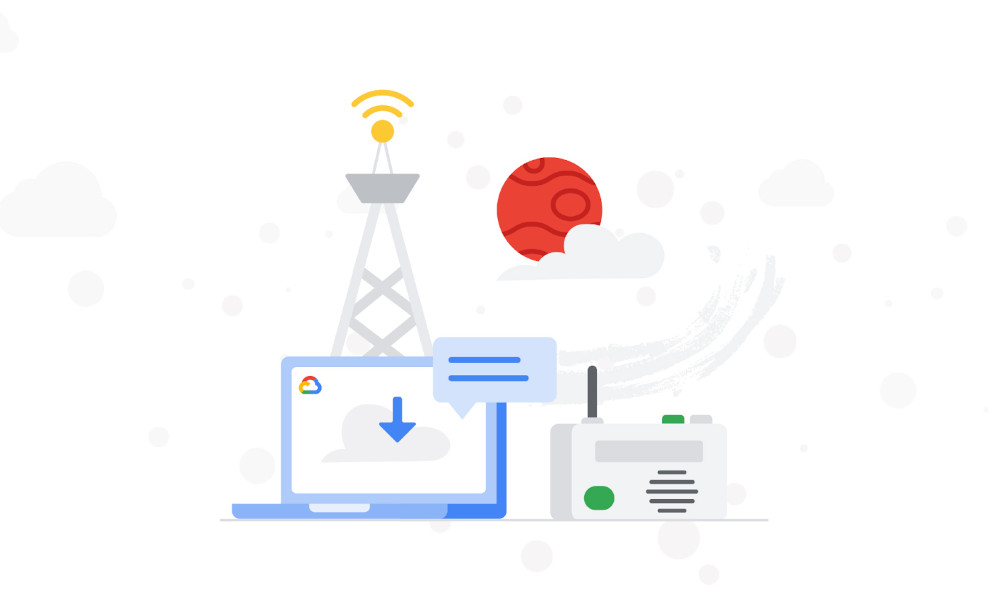 CLOUD
CLOUD
 CLOUD
CLOUD
 CLOUD
CLOUD
Google LLC and AT&T Inc. today introduced two new edge computing solutions aimed at making it easier for enterprises to pursue emerging technology use cases such as deploying robots in retail stores.
The solutions were developed as part of a partnership that the companies inked last year.
The first new offering is AT&T MEC with Google Cloud. It’s a version of the carrier’s existing AT&T MEC solution, which allows companies to order a miniature 5G network that provides wireless connectivity the same way as an AT&T cell tower, except in a much smaller area. Enterprises can deploy the miniature 5G network at locations such as stores to provide high-speed network access.
The retail sector is one of the industries Google and AT&T are targeting with the offering. To improve operational efficiency, retailers are deploying new technologies at their stores, such as shelf scanning robots that automatically detect when merchandise needs to be replenished.
The data generated by a company’s robots is sent to its backend infrastructure for analysis. The miniature 5G network provided by AT&T functions as a channel through which data can travel from the robots inside a store to a company’s remote backend infrastructure.
Alternatively, the network can route the data to an edge computing server running directly in the store. That reduces latency since information only has to travel to a machine at a different corner of the same retail space rather than to a remote data center. According to AT&T, the technology is useful not only for robots at retail stores but also other types of “internet of things” devices deployed in a variety of environments, including factories.
AT&T MEC with Google Cloud combines the 5G networking capabilities provided by the carrier with Google cloud services. Companies can use the artificial intelligence and analytics services in the search giant’s cloud to scan the data generated by connected devices such as robots for useful insights. The offering will also provide access to other Google Cloud capabilities, the companies said, including its Kubernetes features.
“5G, cloud services and edge compute each have a tremendous amount of promise as standalone technologies,” said Jason Leigh, International Data Corp.’s research manager for 5G and mobile services research. “But coupling these three as complementary, enabling technologies both accelerates and extends the promise of digital transformation in many more business settings.”
AT&T MEC with Google Cloud is designed for scenarios where a company needs to provide low-latency network connectivity in a relatively small area such a store. Some edge computing projects have different requirements. There are cases where a company must provide low-latency network connectivity for devices spread across an area as large as a city, which is the use case Google and AT&T are addressing with the second new offering they debuted today.
The offering is marketed as AT&T Network Edge with Google Cloud. It uses Google’s global network of so-called points of presence.
When a piece of data is sent over long distances, for example between continents, it must often cross not one but multiple companies’ network infrastructure to reach its destination. This is true for data sent to and from Google Cloud as well. To support long-distance connections, Google allows information to jump from its network to the networks of other companies such as internet providers using computing equipment clusters known as points of presence.
Google has hundreds of points of presence around the world. Through the new AT&T Network Edge with Google Cloud solution, companies deploy applications at Google points of presence, then connect to them via AT&T’s 5G or fiber network.
The reason Google and AT&T see the offering lending itself well to edge computing has to do with latency. Many of Google’s points of presence are located in major metropolitan areas. This allows an enterprise to deploy an application on a point of presence located in the same metropolitan area as the employees or devices using that application. The close proximity allows employees and devices to access the application with less latency than if it were running in a cloud data center hundreds of miles away.
The solution should be particularly useful when the devices a firm wishes to connect are spread across a bigger area than it can reach with a miniature 5G network of the kind a retailer might set up in a store. For example, a delivery company may wish to analyze sensory data in real-time from its trucks as they ship packages to customers throughout a city.
AT&T Network Edge with Google Cloud will initially become available in Chicago this year. AT&T and Google will bring the offering to Atlanta, Dallas, Miami and San Francisco next, with plans to eventually have it up and running at more than 15 major cities.
THANK YOU